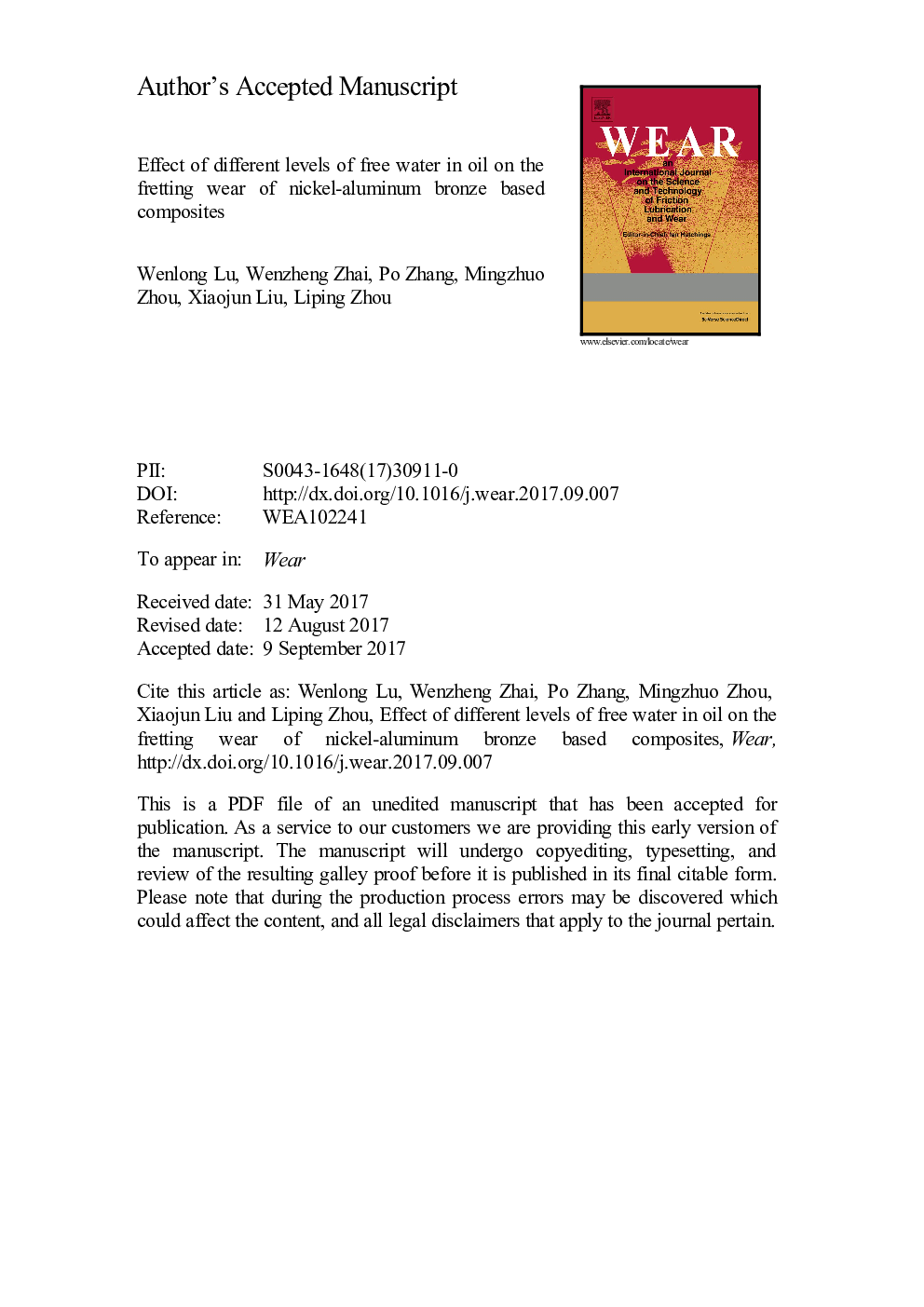| Article ID | Journal | Published Year | Pages | File Type |
|---|---|---|---|---|
| 4986401 | Wear | 2017 | 26 Pages |
Abstract
Fretting wear of nickel-aluminum bronze (NAB) alloys and 15Â wt% Ti3SiC2/NAB composites against the 42CrMo4 steel was studied through flat-on-flat testing at oil-lubrication conditions with varying free-water contents (0, 26.8, 52.3 and 76.7Â wt%). Tribological test results revealed that the addition of Ti3SiC2 substantially reduced the fretting wear and the friction coefficient of NAB alloys at all testing conditions, which could be attributed to high absorption of the fracture energy on the wear track by the deflection of fatigue cracks along Ti3SiC2/NAB interfaces. In addition, microstructural analyses and dissipative particle dynamics simulations revealed that high free-water contents facilitated the propagation of cracks and break of the oil film, which resulted in the transformation of wear mechanisms from abrasion and mild oxidation at the low free-water contents to abrasion, deformation and oxidation at the high contents. Accordingly, the steady-state friction coefficient of Ti3SiC2/NAB composites increased from 0.09 to 0.17 as the free-water content increased from 0 to 76.7Â wt%.
Related Topics
Physical Sciences and Engineering
Chemical Engineering
Colloid and Surface Chemistry
Authors
Wenlong Lu, Wenzheng Zhai, Po Zhang, Mingzhuo Zhou, Xiaojun Liu, Liping Zhou,
